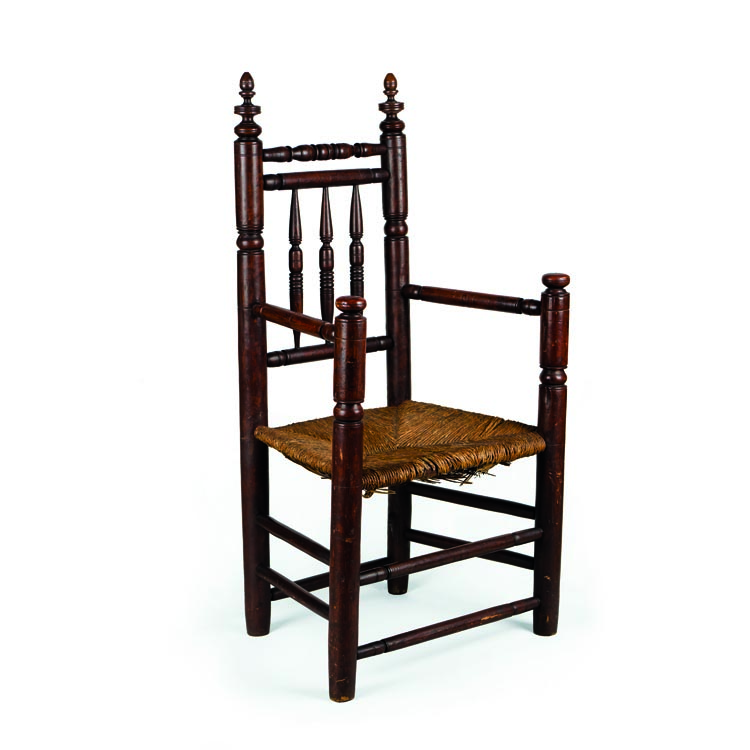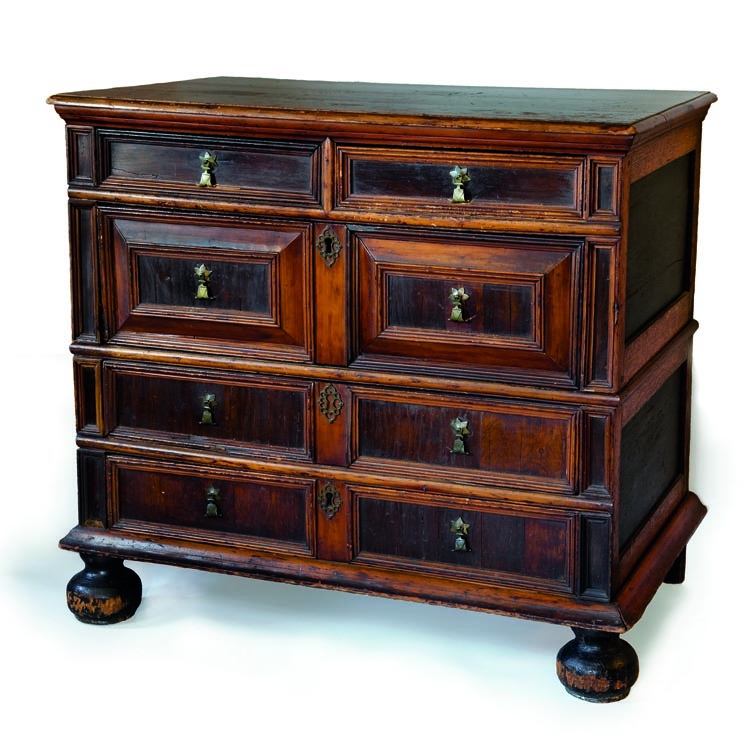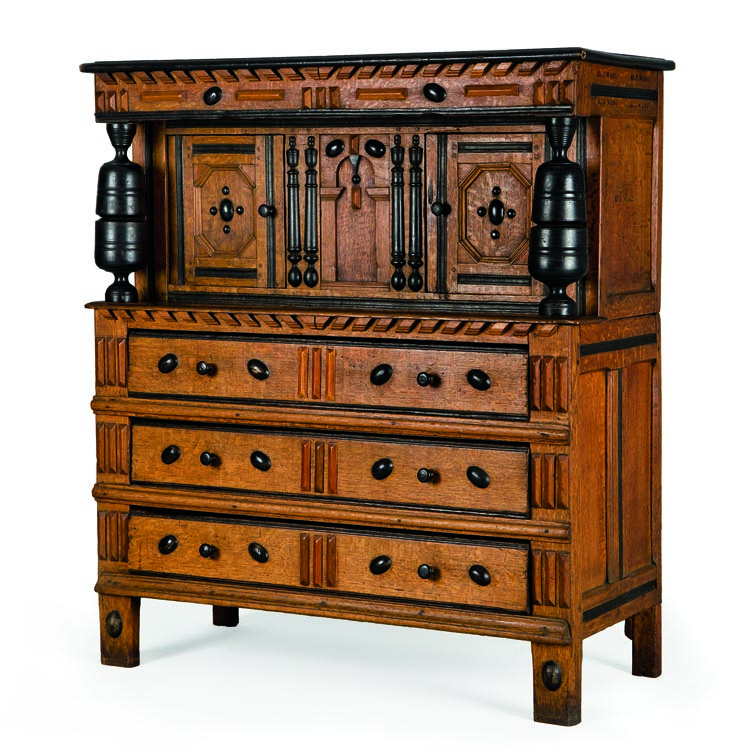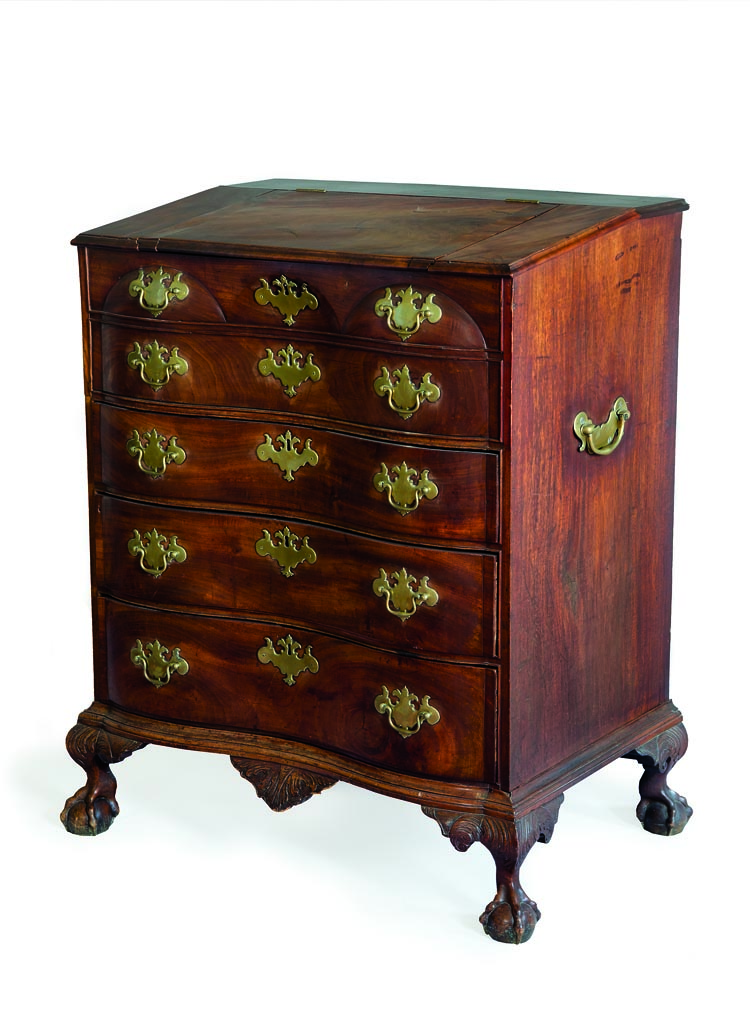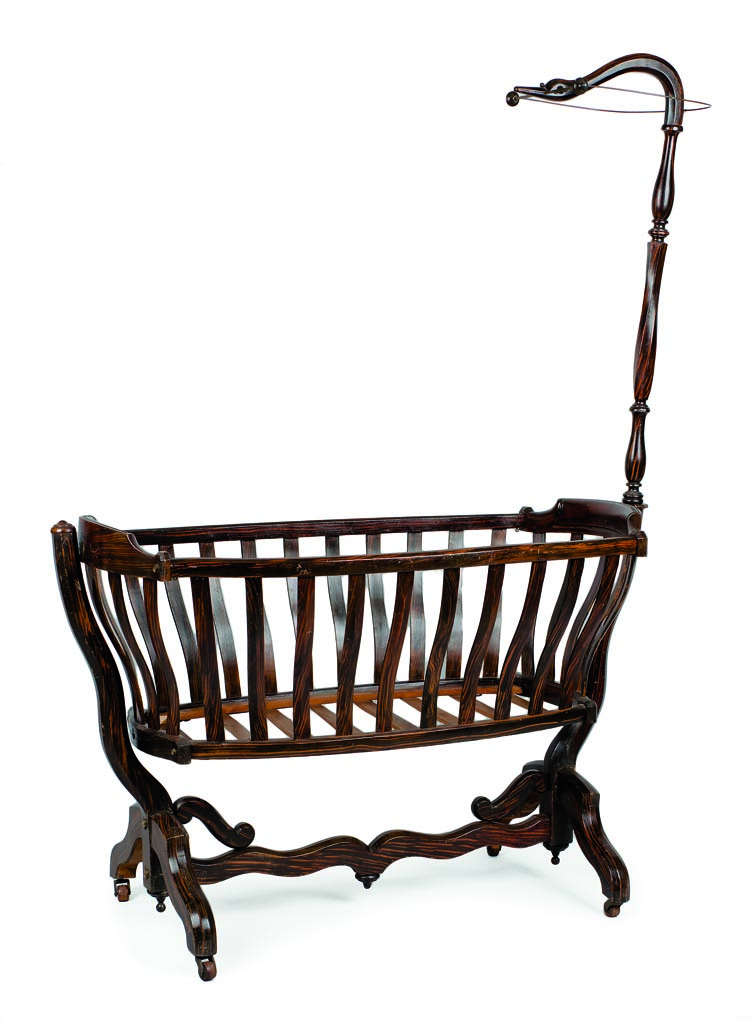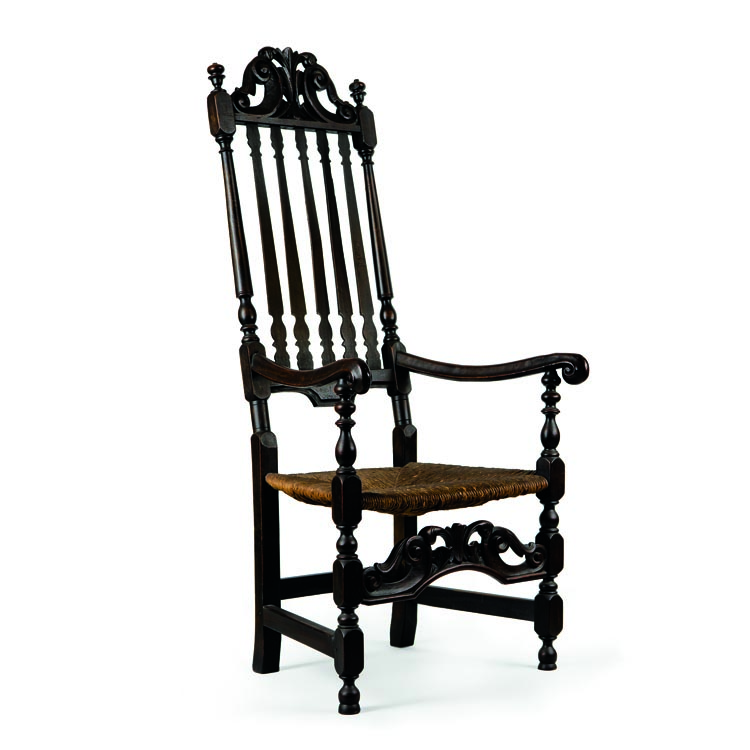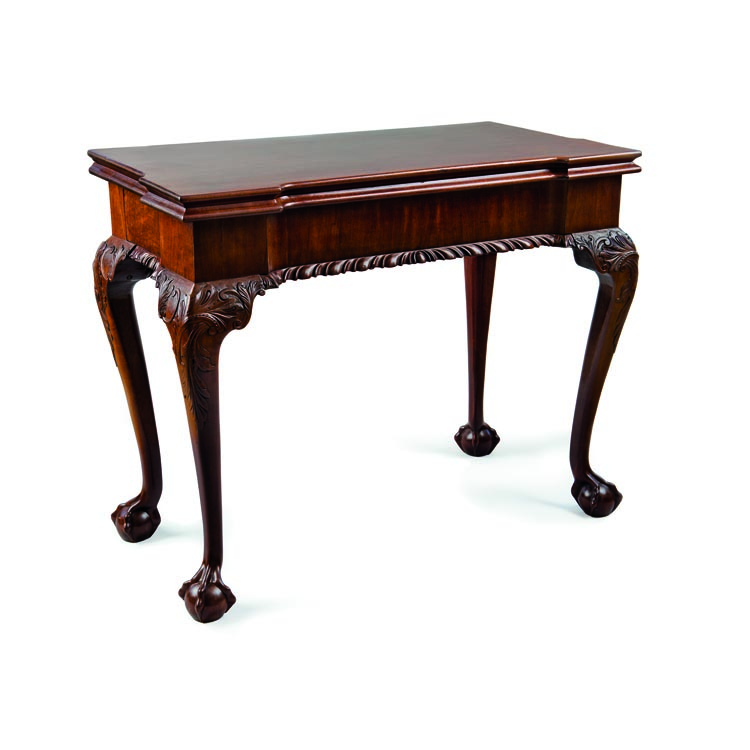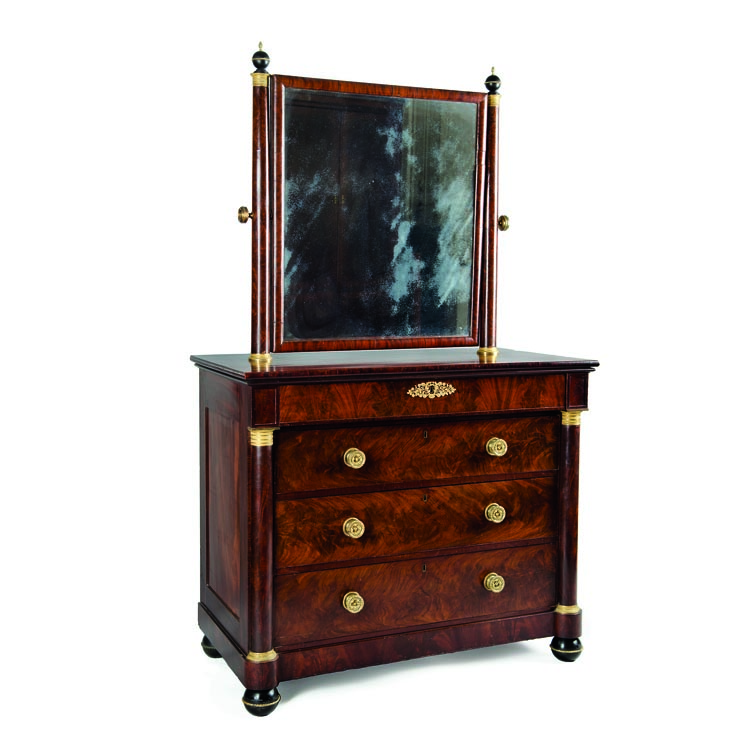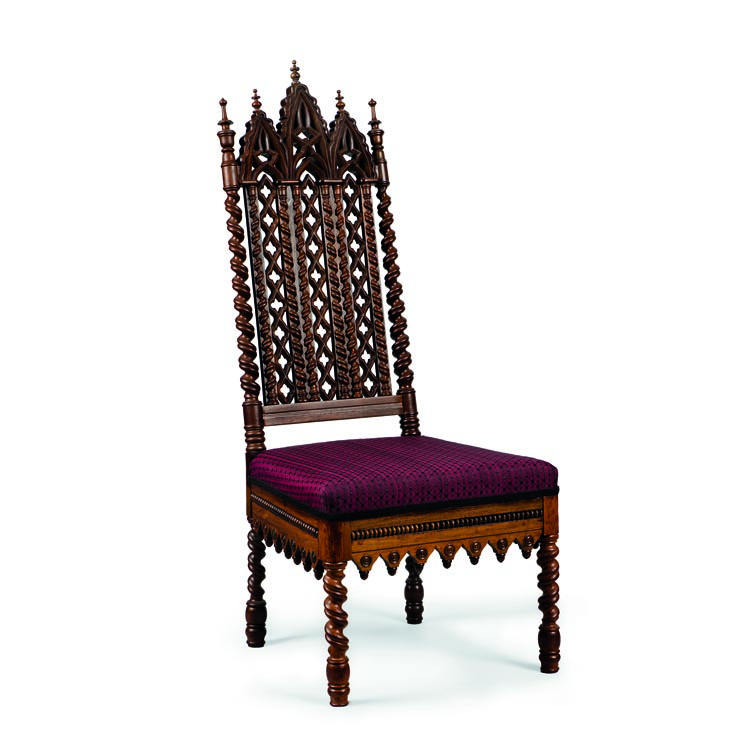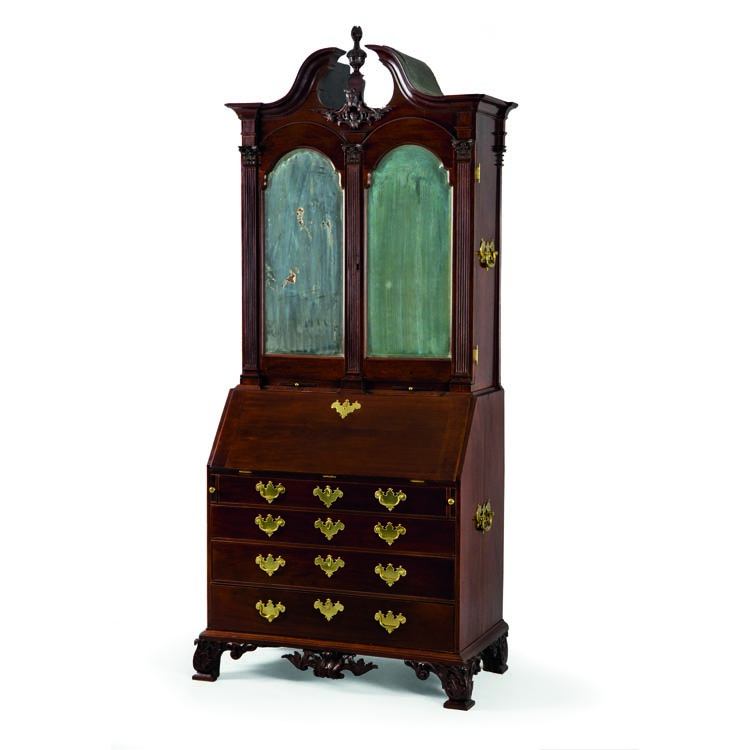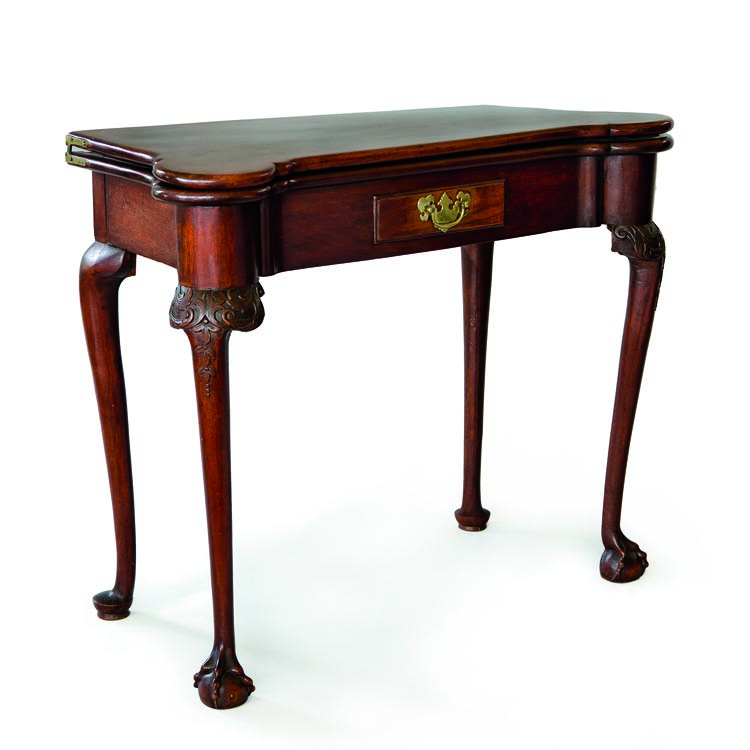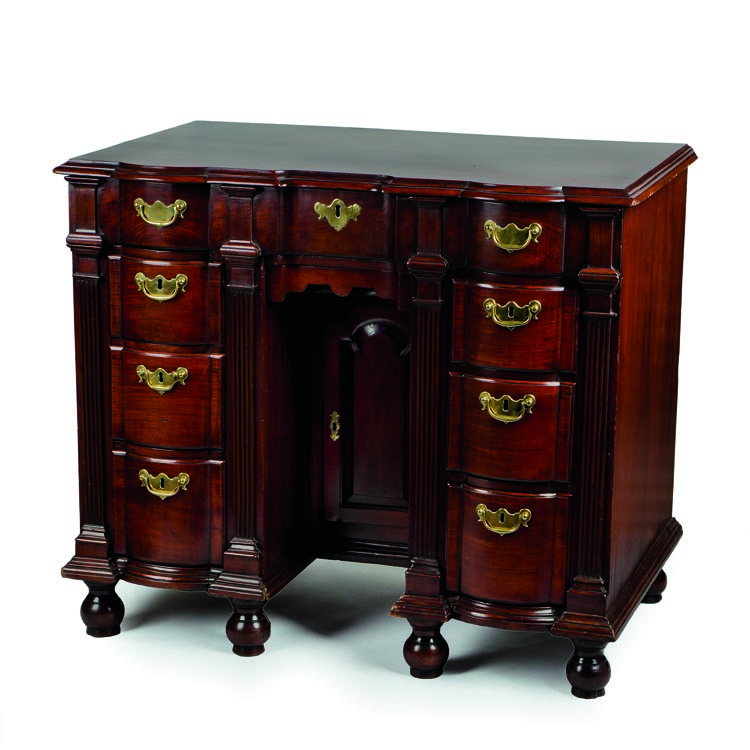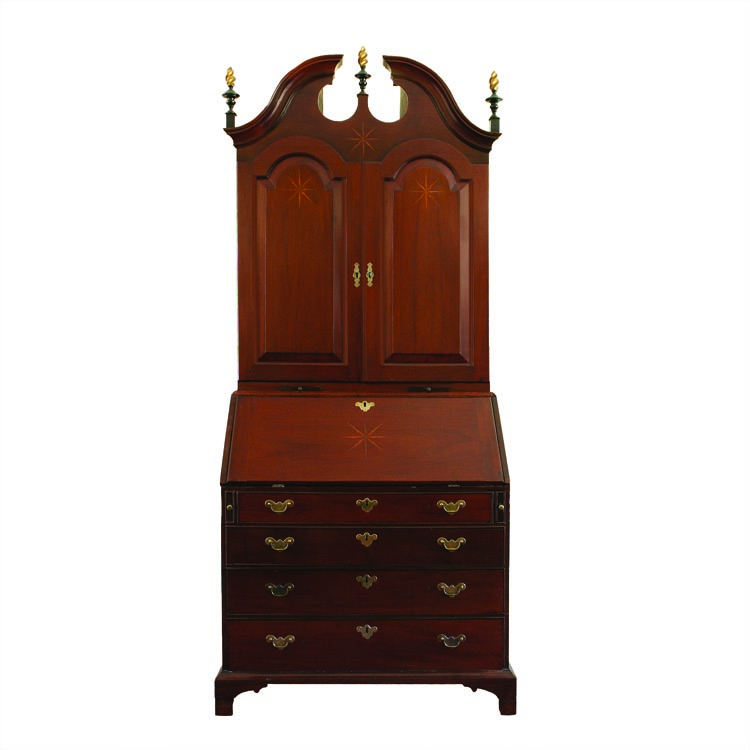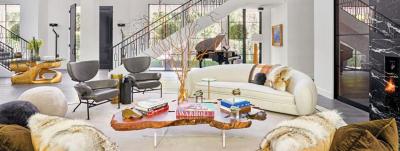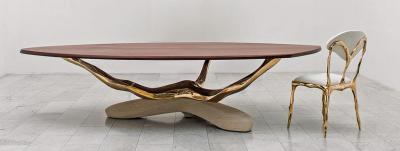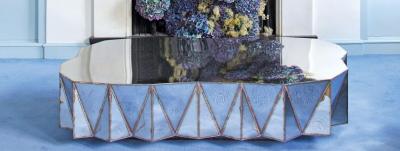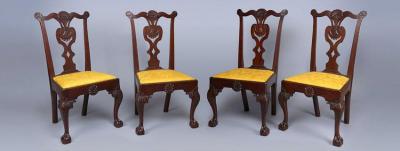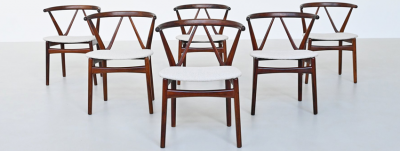The Cabinetmaker and the Carver
Boston Furniture from Private Collections
Furniture tells us much about the past—about social customs and human interaction, about the relationship between Americans and the world, about the changing nature of technology and the evolution of aesthetics. The Cabinetmaker and the Carver: Boston Furniture from Private Collections, October 4, 2013–January 17, 2014 is part of Four Centuries of Massachusetts Furniture, a unique initiative undertaken by eleven cultural institutions to celebrate and document the Commonwealth’s long tradition of furniture making that started in Boston in the 1630s and continues today.1 This exhibition offers visitors to the Massachusetts Historical Society in Boston a rare opportunity to see nearly fifty examples of significant furniture borrowed from private collections in the greater Boston area. Ranging in date from the late seventeenth century to about 1900, these privately held treasures, supplemented with documents, portraits, and other material from the MHS collections, provide in capsule form a look at the trajectory of cabinetmaking in the Hub.
Central to this exhibition’s purpose is the concept that furniture is an important type of three-dimensional historical evidence, often as revealing (when interpreted) as the written word. By providing a snapshot of Boston’s distinctive furniture tradition, this exhibition, we believe, provides another lens through which to examine the city’s long and distinguished history.
The exhibition also focuses attention on the strong body of local collectors who have done so much to preserve the material life of the city’s past. In locating Boston-made objects, these collectors have been forced to draw upon a body of objects seriously eroded by the vicissitudes of time. Since the city’s founding in 1630, the stock of Boston-made furniture, especially the early pieces, has been depleted by wars, numerous fires, and other disasters, all common to any urban environment. The burning of Charlestown after the Battle of Bunker Hill and the British occupation in the Revolution, when anything combustible was used as firewood, destroyed many seventeenth- and eighteenth-century pieces. The dispersal of the Loyalists, many of whom were affluent citizens, also accounted for the loss of many pieces to Canada and England, while the major Boston fire of 1872 and urban renewal in the twentieth century surely caused the disappearance of many other objects from all time periods.
One of the early chairs in the exhibition (Fig. 1) was given to the MHS with a history of ownership by Mather Byles (1706/7–1788), but it predates Byles’s life and he probably inherited it from his uncle Cotton Mather (1663–1728), or even from his maternal grandfather, Increase Mather (1639–1723). If the latter is the case, it might have been brand new when the Great Fire of 1676 struck Boston on November 27 of that year. Increase Mather’s house was consumed by the fire. He later wrote to John Cotton: “Lumber in ye house, is mostly consumed, as bedsteads Tables &c yet ye Lord hath spared to us all [our] beds & bedding & most of ye chairs in ye Houses & most of or Linnen. Plate is mostly melted….” Mather emptied his house as best he could, throwing his “Bookes down ye stairs as fast as wee could,” until someone called to him and “told me I was a dead man if I stayd any longer.” 2
A seventeenth-century Boston chest of drawers (Fig. 2) is representative of the type of “Pilgrim Century” furniture that has been collected now for well more than a century. A pencil inscription on the underside of its top, dated April 1877, indicates that this chest, then “250 years old,” was sold by John Allen, an early Boston dealer and collector, adding a layer of interest to the long life of this extraordinary object. A John Allen, presumably the same man, lent a number of relics associated with George Washington, John Quincy Adams, the Marquis de Lafayette, and others to the massive exhibition of Revolutionary relics organized at 56 Beacon Street by the Ladies’ Centennial Commission in June 1875.3
An early Cambridge-school cupboard (Fig. 3) is also associated with more recent generations of New England furniture enthusiasts. It is stamped five times with the name “D. T. WARD,” in a type of early nineteenth-century brand that often represents the name of a later owner. In the twentieth century it was acquired by the firm of Israel Sack on Charles Street in Boston. Sack’s firm, which eventually moved to New York and was carried on until fairly recently by his three sons, became one of the most reputable and long-lasting dealers in early American furniture. The notable New England collector Dwight Blaney (1865–1944) purchased the piece from Sack in 1918. Blaney, a genteel artist and fisherman, among other things, was also a founder of the Walpole Society, an early and ongoing distinguished group of Americana collectors.4
In good Boston fashion, of course, several objects in the exhibition remain in the same family for which they were originally made. One distinguished example is an unusual merchant’s writing desk (Fig. 4) made for Stephen Salisbury of Worcester. An elegant marble-topped sideboard, notable for (in the words of the Seymour scholar Robert D. Mussey Jr.) having “the single finest example of inlay work on any known piece of Boston Federal furniture” and equal to any produced elsewhere in America, was made for John and Eleanor Derby of Salem. It has passed through many generations of the same family to the present owners.5 The same is true for the cradle (Fig. 5) owned originally by Isabella Stewart Gardner, which has descended through only a few generations to today’s custodians.
Several collectors focus tightly on a specific style or time period. Such is the case with the chest of drawers in fig. 2 and the banister-back chair (Fig. 6), each of which normally resides in the company of a wide range of objects primarily made or owned in early New England. A card table with concertina action (Fig. 7), now attributed to James Graham, comes from a collection with a concentration of Massachusetts furniture in the rococo style. One room in the exhibition is devoted to Boston furniture in the late neoclassical period, primarily by the firms of Emmons and Archbald and Isaac Vose and Son (Fig. 8).
Another collector has selected the Gothic Revival of the mid-nineteenth century (Fig. 9) as a focal point, collecting works in that style in all media and from many locations. By this time, determining a Boston origin for a given piece can be problematic. Although numerous sources indicate that Gothic and Elizabethan Revival furniture was made in Boston by the 1840s, changes in the furniture industry make it difficult to identify locally made products, even though Boston makers such as George Croome, Gilbert Whitmore, and James Paul advertised that they made such wares. One complicating factor is that furniture makers would import objects made elsewhere (New York, for example, a center of Gothic Revival furniture making) to sell at retail, but would add their own label to the objects. The expansion of the retail trade, made possible by more efficient transportation and communication networks, makes it difficult to identify the source of objects, as the regional characteristics of furniture—relatively distinct in the eighteenth century—began to blur in the nineteenth. This chair, collected locally, appears to represent the Boston expression of the style.6 The more well-known rococo revival is represented by a patented miniature adjustable sofa by Augustus Eliaers and a center table owned originally by the famous librarian Justin Winsor, who specified that it contain carved busts of Washington, Franklin, Shakespeare, and Daniel Webster, one on each side.7
Many objects in the exhibition come from several wide-ranging collections of American art whose owners carry on the tradition of such twentieth-century counterparts as Francis P. Garvan, Maxim Karolik, Henry Francis du Pont, and several others who collected on a grand scale. Selecting just one or a few examples does not do justice to the strength and breadth of their holdings. An important rococo desk and bookcase owned originally by Gilbert Deblois of Boston (Fig. 10), with carving attributed to John Welch, only hints at the richness of one given collection. A card table (Fig. 11) owned originally by the Reverend John Howland (1721–1804), pastor in Plympton, Massachusetts, from 1746 until his death, and a dressing table owned in the Parker family of Portsmouth, New Hampshire, and Boston (Fig. 12) are drawn from two other distinguished collections. A “starkly elegant” (in the words of John T. Kirk) desk and bookcase (Fig. 13) similarly represents the holdings of another substantial collection of early Americana. In each case, today’s generation of dealers, auction house specialists, and other professionals have helped guide and form these collections, much as Israel Sack, Hymie Kaufman, and many other early members of “the trade” worked with earlier generations.
All of the collectors represented in the exhibition share a passion for their material. None more so, perhaps, than the architect Stephen Judge, owner of an extraordinary turned chair (Fig. 14) probably made by A.H. Davenport and Company. A working drawing for a very closely related chair exists in a large archive of drawings from Irving and Casson—A. H. Davenport and Company now at the Museum of Fine Arts, Boston. An old photograph (Historic New England) shows the chair in the stair hall of an unknown home, presumably located in Boston. Collected locally about thirty years ago, this chair is today one of the highlights of the Arts and Crafts Movement in Boston, reflecting the historicism and fine craftsmanship that are integral parts of that movement in New England.
As the preamble to the MHS constitution notes, the Society’s goal was “to mark the genius, delineate the manners, and trace the progress of society” through its gathering and preservation of historical materials. “The Cabinetmaker and the Carver,” by offering a snapshot of Boston’s outstanding tradition of furniture making, hopes to contribute to that mission. It is a testimony to the efforts of today’s impassioned collectors who, like Jeremy Belknap and his fellow founders of the MHS, are equally devoted to rescuing “the true history of this country from the ravages of time, and the effects of ignorance and neglect.” 8
The author would like to express his gratitude to Brock Jobe, Dennis Fiori, Diane Garfield, Robert D. Mussey, Jr., Anne Bentley, and other members of the Four Centuries steering committee for their assistance, and to the many lenders to the exhibition, who not only were willing to lend their objects but also freely shared their files and knowledge about them. As always, he is indebted to Barbara McLean Ward for her assistance.
Unless otherwise noted, all photographs are by Laura Wulf of Lightyears Studios, Jamaica Plain, Massachusetts. This article
is based on the exhibition gallery guide.
This article was originally published in the Autumn/Winter 2013 issue of Antiques & Fine Art magazine, a digitized version of which is available on afamag.com. Antiques & Fine Art, AFAmag, AFAnews, and AFA Publishing are affiliated with InCollect.com.
1. For more information on the consortium, see www.fourcenturies.org.
2. Increase Mather to John Cotton Jr., Dec. 13, 1676, in The Correspondence of John Cotton, Jr., ed. Sheila McIntyre and Len Travers (Boston: Colonial Society of Massachusetts, 2009), 179.
3. See Catalogue of the Revolutionary Relics Exhibited at No. 56, Beacon Street, June, 1875, 2d ed. (Boston: Ladies’ Centennial Commission, 1875), 10–11, cat. nos. 173-79; 13, cat. nos. 225-26; 26, cat. no. 292. This exhibition included many objects that can be identified in modern collections, including the Sons of Liberty bowl by Paul Revere (15, cat. no. 267), lent by R. G. Mackey, now at the MFA.
4. For Blaney, see The Antiquers (New York: Alfred A. Knopf, 1980), 105–12. For Sack, see Harold Sack, American Treasure Hunt: The Legacy of Israel Sack (Boston: Little, Brown, 1986).
5. See Robert D. Mussey Jr., The Furniture Masterworks of John and Thomas Seymour (Salem: Peabody Essex Museum, 2004), cat. no. 36.
6. The exhibition includes another local Gothic revival piece, a table that is part of a chamber suite of cottage furniture attributed to Edward Hennessey and Co. with additional painted decoration by Annie Bigelow Lawrence (1820–1893), ca. 1846 (Collection of Mr. and Mrs. Edward L. Stone).
7. Illustrating changes in collecting taste, this walnut library table of ca. 1860 was bequeathed to the MHS by Winsor and entered the institution in 1900. The MHS deaccessioned it in 1949, when Victorian furniture was perhaps at its nadir in terms of popularity. It passed through several hands and is now part of the large and distinguished L. Knife & Son Corporate Collection.
8. Leonard Louis Tucker, The Massachusetts Historical Society: A Bicentennial History, 1791–1991 (Boston: by the Society, 1995), 16.















